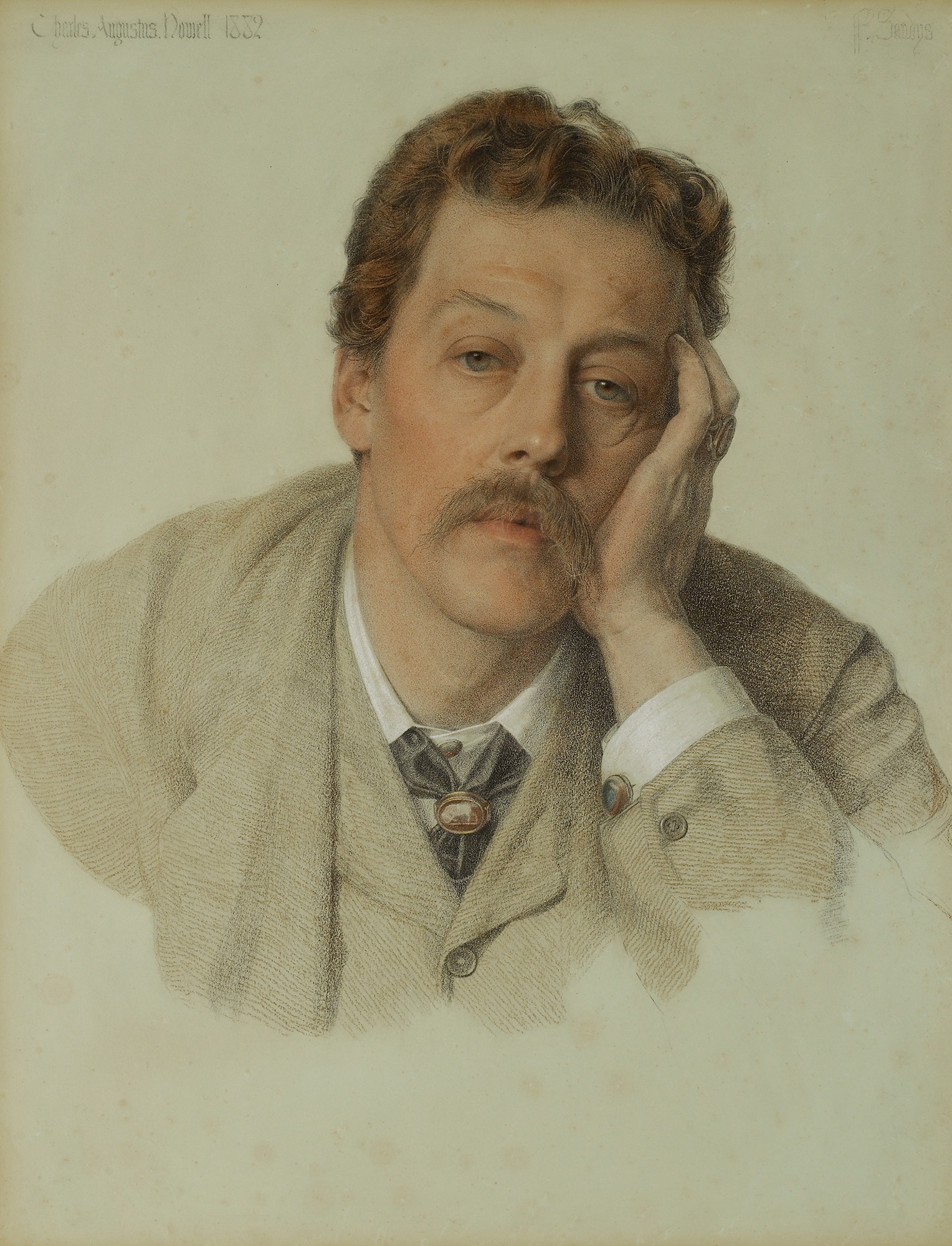Drawing is the cornerstone of artistic practice, but is often overshadowed by "higher" forms of visual art, such as painting and sculpture. When we walk into an art gallery, we find ourselves gravitating towards the large, impressive oil paintings. They are considered the "main event", the best representation of art and its history – but is this really the case? Drawing is more than just a preliminary step to painting; it can show us an artist’s thought process and ideas, depict deep emotion, expose intimate relationships and be innovative and timeless. A remarkable example of this is the current Pre-Raphaelite exhibition at the Ashmolean Museum, Oxford, which brings the group’s rich and varied drawings and watercolours into the spotlight.
An artist can reveal the true personality of their sitter through a drawing. The first section of the Ashmolean’s exhibition includes intimate portraits of the group’s family, patrons and friends; it is here we see a portrait by Frederick Sandys of his friend and art dealer, Charles Augustus Howell, 1882 (pictured below right). Howell was a charming and witty man, but had a darker reputation for blackmail and exploitation. Sandys’ composition reflects this dual personality by making the left side of his face well-lit, glowing and healthy, whilst the right is enveloped in shadows with more pronounced lines. Howell looks directly into the eyes of the viewer, his expression both melancholic and introspective, as if he is aware of his dark side. The artist’s skill in depicting texture with coloured chalks shines through, particularly in the wispy strands of hair, ribbed suit jacket and delicate, smooth skin, creating an almost photo-realistic effect.
 Depictions of intimate relationships can be found throughout the exhibition, notably in the section dominated by the work of Dante Gabriel Rosetti named “Stunners”, a phrase he created to refer to beautiful women. His coloured chalk drawing, Reverie,1868, is an arresting portrayal of Jane Morris who stands out as being incredibly direct in comparison to other, demure portrayals of women. Her piercing, blue eyes demand the viewer’s attention, gleaming with vibrancy, intelligence and sensuality, particularly juxtaposed with monochromatic, soft-focus colour in the rest of the image. But drawings can also reveal the personality of the artist who created them, as well as the sitter. Christina Rossetti wrote in her poem, In an Artist’s Studio that a Pre-Raphaelite woman was painted “not as she is, but how she fills his dream”. Is this “reverie” referring to Morris’s state or Rossetti’s?
Depictions of intimate relationships can be found throughout the exhibition, notably in the section dominated by the work of Dante Gabriel Rosetti named “Stunners”, a phrase he created to refer to beautiful women. His coloured chalk drawing, Reverie,1868, is an arresting portrayal of Jane Morris who stands out as being incredibly direct in comparison to other, demure portrayals of women. Her piercing, blue eyes demand the viewer’s attention, gleaming with vibrancy, intelligence and sensuality, particularly juxtaposed with monochromatic, soft-focus colour in the rest of the image. But drawings can also reveal the personality of the artist who created them, as well as the sitter. Christina Rossetti wrote in her poem, In an Artist’s Studio that a Pre-Raphaelite woman was painted “not as she is, but how she fills his dream”. Is this “reverie” referring to Morris’s state or Rossetti’s?
Drawing is a traditional art form, but it can also be innovative. These Pre-Raphaelite drawings reflect the past and look to the future, showing a variety of inspirations. Study of a Woman’s Head, Turned to the Left by Edward Burne-Jones, 1868 (main picture), was created using red and black chalk, a medium notably used by Raphael. The drawing, as well as others by the artist, has an undeniably Renaissance style, a consequence presumably of Burne-Jones’s travels in Italy, paid for by his patron, John Ruskin. In contrast, there are other works in the exhibition which seem surprisingly ahead of their time, such as a drawing by Sandys called Nepenthe, 1892; the composition and overall aesthetic of the image is not dissimilar to 20th century surrealist photography. It is timeless qualities like this which make the movement continuously relevant and popular.
The exhibition consists of both preparatory drawings and completed artworks in their own right. Some of the watercolour pieces can even be mistaken for oil paintings, as they are so densely worked and opaque, partly because of the use of gouache. Despite being known for their impressive oil paintings, watercolour was an important media for the Pre-Raphaelite circle. Rossetti and Burne-Jones exclusively worked using it for sustained periods and Ruskin only used watercolour, never oil paint. As well as being practical and cost effective, it was a way of getting closer to the tempera paintings of the early Renaissance and manuscript illuminations of the Middle Ages, which were the group’s primary inspiration.
The Pre-Raphaelites are some of the most well known and loved artists of the 19th century. An exhibition like this, which brings together so many high-quality drawings, would not be possible without the group’s personal connection to Oxford. Pre-Raphaelite patron and Oxford man, Thomas Combe, acquired a significant collection of their work, which is at the centre of the Ashmolean’s collection. Moreover, key figures, such as John Ruskin, William Morris and Burne-Jones studied at the university. These factors have made the museum a magnet for bequests and acquisitions, making their collection incredibly rich and varied; they are drawings that deserve to be seen.
If you are looking to learn more about these artists, either as a newcomer or ardent fan, this exhibition offers a unique insight into their lives and work. Its variety of media, scale and subjects make it a model of the importance and beauty of drawings and watercolours, which can be as fulfilling to view as "great" oil paintings.









![SEX MONEY RACE RELIGION [2016] by Gilbert and George. Installation shot of Gilbert & George 21ST CENTURY PICTURES Hayward Gallery](/sites/default/files/styles/thumbnail_125_x_125_/public/mastimages/Gilbert%20%26%20George_%2021ST%20CENTURY%20PICTURES.%20SEX%20MONEY%20RACE%20RELIGION%20%5B2016%5D.%20Photo_%20Mark%20Blower.%20Courtesy%20of%20the%20Gilbert%20%26%20George%20and%20the%20Hayward%20Gallery._0.jpg?itok=3oW-Y84i)





Add comment